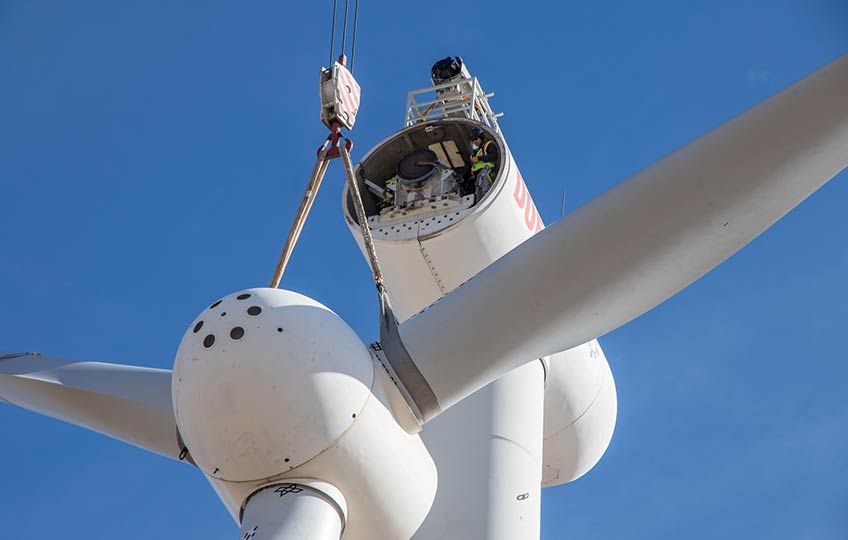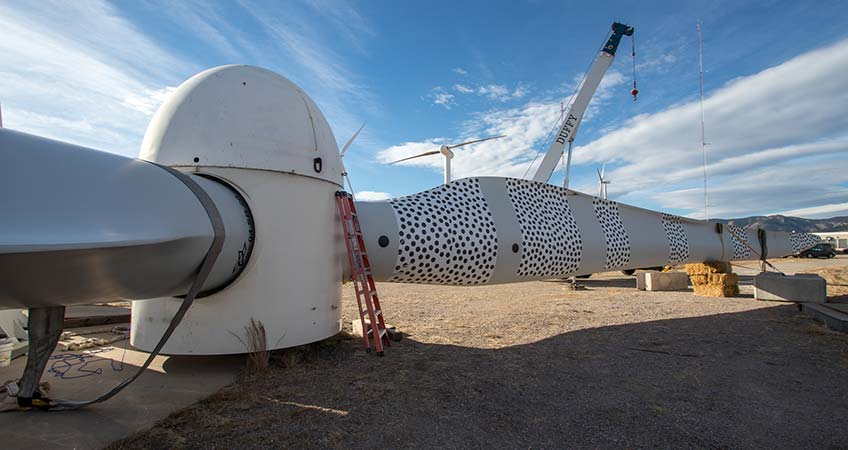Field Validation Campaign of German-Designed Rotor Blades Measures Adaptation to Strong Winds

Scott Wilde, NREL research operations manager, directs the crane-lift of the DLR rotor from the CART3 nacelle. Wilde uses a radio to coordinate two crane operators and research technicians on the ground to ensure the equipment is installed smoothly and safely. Photo by Lee Jay Fingersh, NREL
The German Aerospace Center (Deutsches Zentrum für Luft-und Raumfahrt, DLR) has partnered with NREL to use the three-bladed Controls Advanced Research Turbine (CART3) at the National Wind Technology Center to investigate how well rotor blades designed with bending-torsion coupling handle strongly variable wind speeds.
Three 20-meter-long blades were installed on the CART3 this fall, along with instrumentation that will capture the structural-mechanical and aerodynamic behavior of the blades. At higher wind speeds, each rotor blade should independently twist to lessen the angle of attack and the lift generated by the airfoil, reducing load on the system and increasing the service life of the rotor blades.

Sensors along the length of the blades will measure the blades’ behavior during the field validation campaign, the first practical analysis of these innovative designs. The dot patterns seen on one of the blades will be used for a digital image correlation process as one of the methods to measure blade deflection during operation of the wind turbine. The information will be correlated with other data sources, including the extensive measuring technology in the CART3, to improve future designs and simulation models. Photo by Lee Jay Fingersh, NREL
"We are very excited to find out how our rotor blades will behave in these field assessments," says Zhuzhell Montano Rejas, DLR Institute of Composite Structures and Adaptive Systems project manager.
The validation campaign will continue through the windy winter season, and its findings could lower project costs by extending turbine blade service life and increasing turbine power yield. Study findings will also be used to improve simulation models for next-generation wind turbines.
This strategic partnership represents an example of how NREL leverages infrastructure investments by the U.S. Department of Energy Wind Energy Technologies Office to enable research partners and private companies to make discoveries that will advance the wind energy industry.
This time lapse video shows the installation of the DLR rotor on the CART3.
Last Updated May 28, 2025
